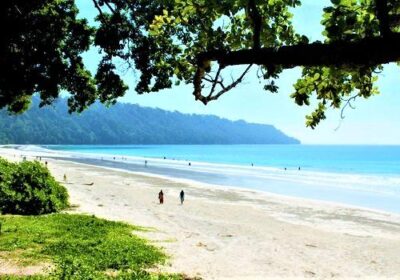Jungle Mahal: Exploring the Enchanting Wilderness of West Bengal
Jungle Mahal, a region in the southwestern part of West Bengal, is a treasure trove of natural beauty, rich cultural heritage, and historical significance. This picturesque area encompasses the districts of Jhargram, Purulia, Bankura, and parts of West Midnapore, offering travelers an opportunity to explore dense forests, ancient temples, vibrant tribal culture, and serene landscapes. Here’s an in-depth guide to discovering the enchanting charms of Jungle Mahal.
Arrival and First Impressions
Jungle Mahal is accessible by road and rail, with major towns such as Jhargram, Purulia, and Bankura serving as gateways to the region. The journey to Jungle Mahal is an experience in itself, with scenic views of lush green forests, rolling hills, and tranquil rivers setting the tone for an immersive exploration of this enchanting wilderness.
Natural Beauty and Biodiversity
Lush Forests and Scenic Landscapes
Jungle Mahal is renowned for its dense forests, undulating hills, and picturesque landscapes. The region’s natural beauty is a major draw for nature lovers and outdoor enthusiasts.
- Dense Forests: The forests of Jungle Mahal are rich in biodiversity, featuring a variety of trees such as sal, teak, and mahua. These forests provide a habitat for numerous wildlife species and offer a serene environment for nature walks and wildlife spotting.
- Scenic Hills: The rolling hills of Jungle Mahal, particularly in Purulia and Bankura, add to the region’s scenic charm. These hills, covered with greenery and dotted with rocky outcrops, are ideal for trekking and hiking.
- Tranquil Rivers: The rivers and streams flowing through Jungle Mahal enhance the natural beauty of the region. These water bodies, surrounded by lush vegetation, offer opportunities for picnicking, fishing, and leisurely boat rides.
Wildlife and Bird Watching
Jungle Mahal is home to a diverse array of wildlife, making it a paradise for wildlife enthusiasts and bird watchers. The region’s rich biodiversity includes several protected areas and wildlife sanctuaries.
- Wildlife Sanctuaries: Notable wildlife sanctuaries in Jungle Mahal include the Ajodhya Hill and Forest Reserve Area in Purulia and the Jhargram Rajbari Forest in Jhargram. These sanctuaries are home to various species of mammals, reptiles, and birds.
- Bird Watching: The forests and water bodies of Jungle Mahal attract numerous bird species, both resident and migratory. Bird watchers can spot a variety of birds, including peacocks, parakeets, kingfishers, and more, making it an ideal destination for bird watching and photography.
Cultural Heritage and Historical Significance
Ancient Temples and Historical Sites
Jungle Mahal boasts a rich cultural heritage, reflected in its ancient temples, historical monuments, and traditional art forms. The region’s history is intertwined with the legacy of tribal communities and local rulers.
- Ancient Temples: The region is dotted with ancient temples, many of which date back to the medieval period. Notable temples include the Terracotta Temples of Bishnupur, the Susunia Hill temples, and the Radha Govinda Temple in Bankura. These temples are known for their intricate architecture and historical significance.
- Historical Monuments: Jungle Mahal is also home to historical monuments such as the Jhargram Raj Palace, Garh Panchkot, and the ruins of Banda Deul. These sites offer a glimpse into the region’s rich history and architectural heritage.
Tribal Culture and Traditions
The tribal communities of Jungle Mahal, including the Santhals, Mundas, and Oraons, contribute to the region’s vibrant cultural tapestry. Their traditional customs, festivals, and art forms are integral to the cultural identity of Jungle Mahal.
- Tribal Festivals: Festivals such as the Tusu Parab, Bhadu, and Sohrai are celebrated with great fervor in Jungle Mahal. These festivals feature traditional music, dance, and rituals that reflect the cultural heritage of the tribal communities.
- Art and Craft: The tribal communities of Jungle Mahal are known for their unique art and craft traditions. Terracotta art, Dokra metal craft, and Patachitra paintings are some of the traditional art forms that visitors can explore and appreciate.
Activities and Experiences
Adventure and Outdoor Activities
Jungle Mahal offers a range of adventure and outdoor activities for thrill-seekers and nature enthusiasts. The region’s diverse landscapes provide the perfect backdrop for various recreational activities.
- Trekking and Hiking: The hills and forests of Jungle Mahal are ideal for trekking and hiking. Popular trekking routes include the Ajodhya Hills, the Susunia Hill, and the Ayodhya Pahar. These treks offer breathtaking views and an opportunity to explore the natural beauty of the region.
- Camping and Nature Walks: Camping in the forests of Jungle Mahal is a unique way to experience the region’s wilderness. Visitors can also enjoy guided nature walks, which provide insights into the local flora and fauna.
Cultural and Heritage Tours
Exploring the cultural heritage of Jungle Mahal is a must for history and culture enthusiasts. Heritage tours offer an opportunity to visit ancient temples, historical monuments, and tribal villages.
- Temple Tours: Visiting the ancient temples of Jungle Mahal provides a glimpse into the region’s architectural and religious heritage. The Terracotta Temples of Bishnupur and the Susunia Hill temples are particularly noteworthy.
- Tribal Village Visits: Visiting tribal villages allows visitors to experience the traditional lifestyle and culture of the tribal communities. These visits often include interactions with local artisans, witnessing traditional crafts, and participating in cultural activities.
Practical Tips for Visitors
Best Time to Visit: The best time to visit Jungle Mahal is during the cooler months from October to March. The weather is pleasant, making it ideal for outdoor activities and exploration. The monsoon season (June to September) also adds a unique charm to the region, with lush greenery and flowing rivers.
Accommodation: Accommodation options in Jungle Mahal include guesthouses, eco-resorts, and budget hotels in towns such as Jhargram, Purulia, and Bankura. Staying in these accommodations allows visitors to enjoy the tranquility of the countryside and the hospitality of the local community. Booking in advance is recommended, especially during peak seasons.
Transportation: Renting a car or hiring a local taxi is the most convenient way to explore Jungle Mahal and its surroundings. Public transportation options are limited, so having your own vehicle provides flexibility and ease of travel. The roads leading to Jungle Mahal offer scenic views, adding to the overall travel experience.
Safety and Etiquette: Respect for the natural environment, local customs, and cultural heritage is important when visiting Jungle Mahal. Follow all safety guidelines, avoid littering, and maintain a respectful demeanor within the area. Dress comfortably for outdoor activities and be prepared for varying weather conditions.
Reflection and Farewell
As my journey through Jungle Mahal came to an end, I was deeply moved by the region’s natural beauty, rich cultural heritage, and serene ambiance. From the dense forests and rolling hills to the ancient temples and vibrant tribal culture, Jungle Mahal offers a unique and enriching travel experience. Whether you are a nature enthusiast, a history buff, or someone looking to immerse yourself in the local culture, Jungle Mahal promises an unforgettable visit.
Plan your trip to Jungle Mahal and discover the enchanting wilderness and cultural marvels of West Bengal, where nature, history, and tradition come together to create a truly magical experience.






Leave feedback about this